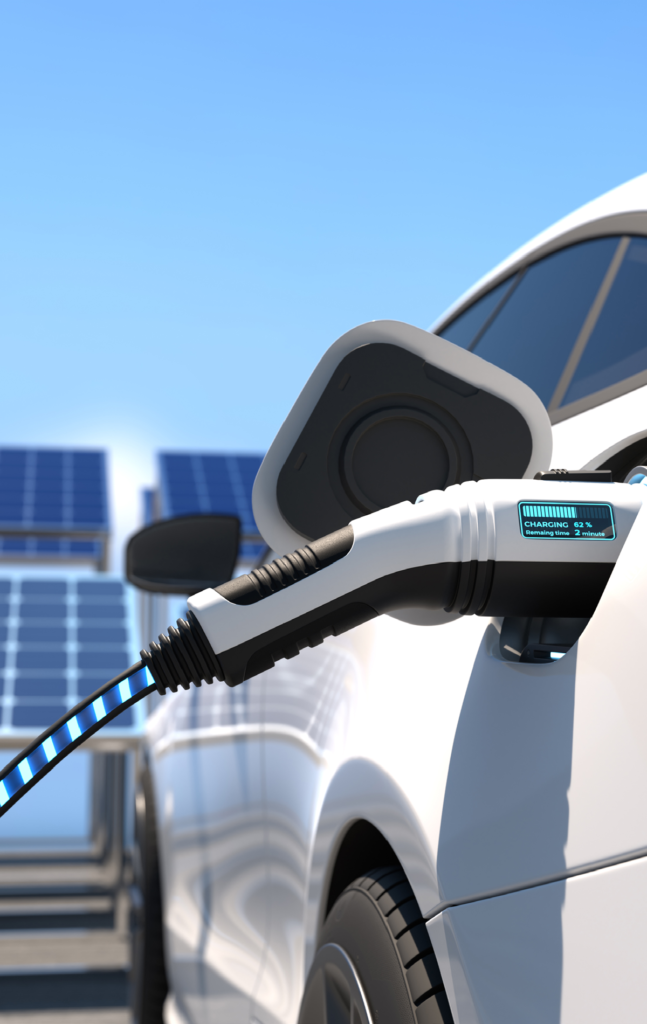ENVIRONMENTAL IMPACT
Cenate’s new material in EV batteries will directly lower the CO2 emissions from anode materials production with as much as 93%.
Cenate’s materials do not only contribute to more affordable EV batteries but also enhance the energy density and driving range of EVs, thereby expediting the electrification of the transport sector, and leading to an additional substantial CO2 avoidance.
Future Oriented Battery Innovations
Substitution of fossil fuels with clean electricity, generated by renewable sources, is a great opportunity to positively impact a key area in terms of climate change. To facilitate the transition from conventional internal combustion engine vehicles to electric vehicles, a significant imperative arises for the procurement of batteries. This, in turn, underscores the essential requirement for sourcing raw materials intended for anode and cathode applications.
The current predominant anode material for electrical vehicle (EV) battery technology is graphite, and the large majority of this material is synthetic graphite. Most of the synthetic graphite in today’s EV batteries is made in China through a CO2 intensive industrial process that converts non-renewable petroleum derivatives into graphite. Graphite is therefore one of the largest carbon dioxide emitters in lithium-ion battery cell manufacturing. Replacing graphite with Cenate’s silicon-based materials will close to eliminate direct emissions from anode materials production.
The road transportation sector is directly responsible for around 15% of the global emissions just by fuel consumption. Substitution of fossil fuels with clean electricity, generated by renewable sources, will positively impact a key area in terms of climate change. However, the electrification of the transportation sector has challenges regarding energy storage. Current electric vehicle (EV) batteries are heavy and the driving range, or distance that an EV can go without recharging, is very limited. This range goes between approximately 300 and 650 km. Battery innovations, such as the one by Cenate, can help overcome these challenges.

Avoided Emissions Assessment
Nysnø Climate Investments has estimated the CO2 avoidance over a ten-year period from a 10,000 ton annual production of Cenate’s materials in their Avoided Emissions Assessment
Replacing synthetic graphite
Production of graphite is currently associated with elevated emissions from petroleum-based tar and low yields.
Graphite typically contributes to 18% of the CO2 emissions in the battery value chain.
Each kilogram of Cenate’s material replaces 4-6 kilograms of graphite.
Directly induced effects on emissions
For every kg of Cenate’s products that are used in an EV to replace synthetic graphite, there is a direct estimated reduction in CO2 emissions of 151 kg.
This represents a 93% direct CO2 avoidance by producing Cenate’s materials compared to producing synthetic graphite in China.Enabling effects on emissions
Nysnø Climate Investments estimates an enabling effect of ~800 kg of CO2 avoidance for each kg of Cenate material that results in the conversion from an ICE to an EV because of Cenate’s material attractiveness.
Avoided Emissions Assessment documented by Nysnø Climate Investments
With the replacement of 4-6 kg of conventional battery anode materials by using only one kg of Cenate’s materials, the majority of CO2 emissions from production of anode materials will be avoided. Additionally, the substantial benefits from using Cenate’s materials making batteries smaller, lighter, cheaper and cleaner will accelerate the transitioning from ICE vehicles to EVs, thereby avoiding significant emissions from vehicles also in the use phase.

For documenting these significant avoided CO2 emissions, Cenate engaged Nysnø Climate Investments to carry out a climate footprint analysis of Cenate’s to-be industrialized silicon-based anode materials in a large-scale factory.
We are now proud to present the findings from Nysnø’s analysis, which concludes that a conversion from today’s typical synthetic graphite to Cenate’s new material in EV batteries will directly lower the CO2 emissions during production of the battery with as much as 93% for the active anode material being replaced.